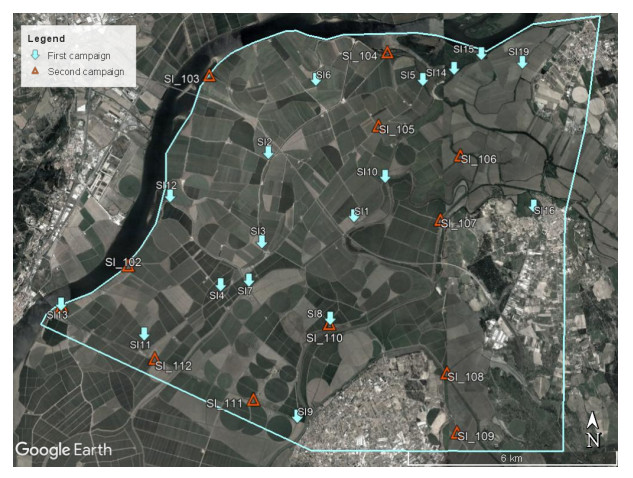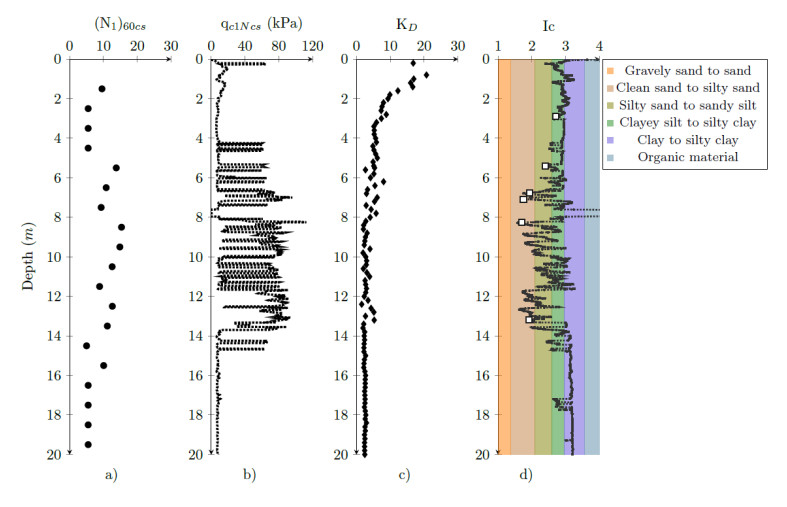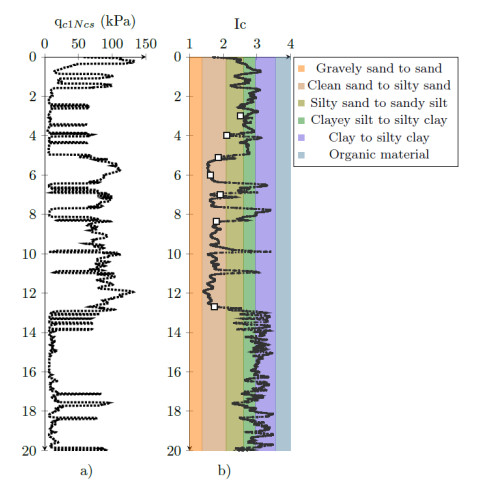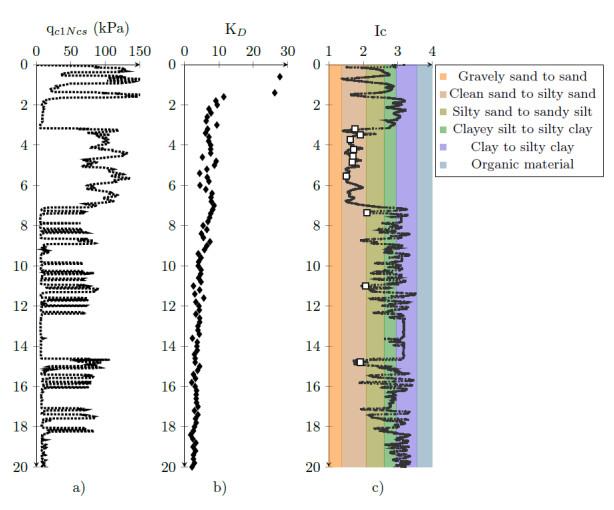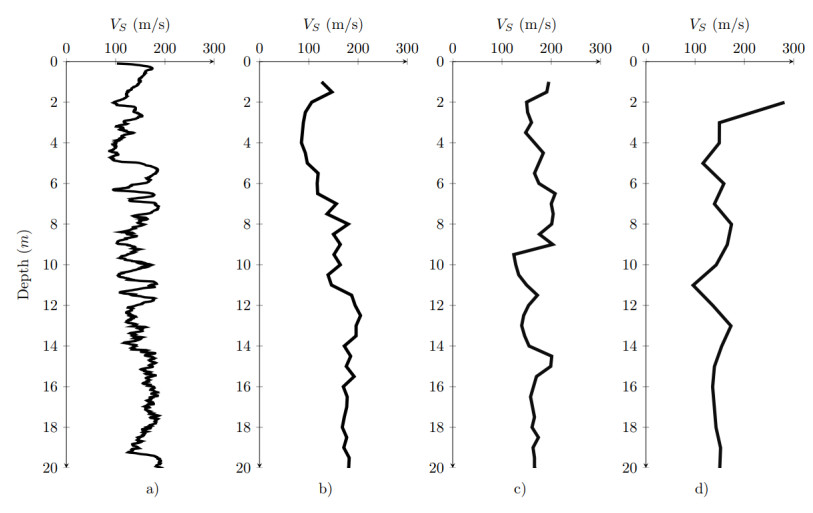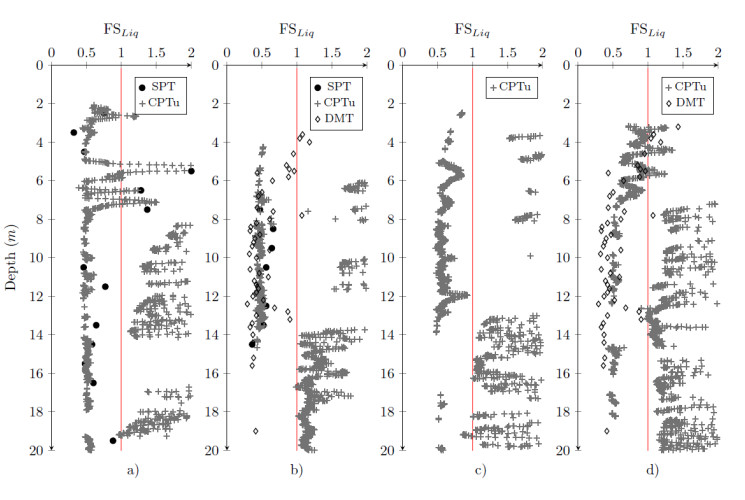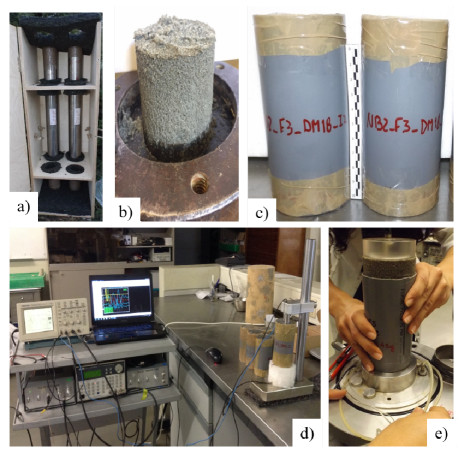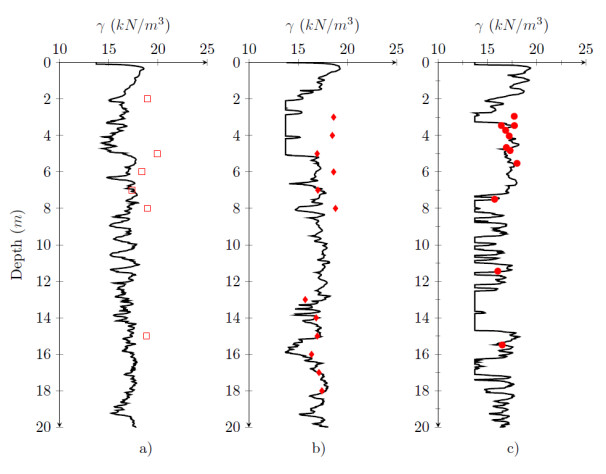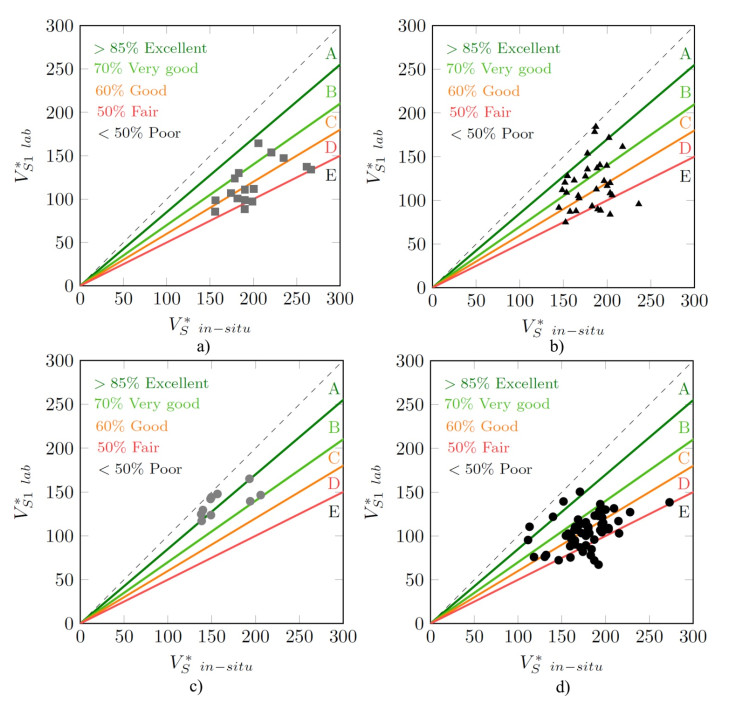In the greater Lisbon area, widespread alluvial sandy deposits can be found that, due to its geology, geomorphology and high seismicity satisfy the criteria to trigger soil liquefaction if subjected to a cyclic action. Within the scope of a research project on liquefaction (LIQ2PROEARTH), an extensive geological, geotechnical, and geophysical database was established, including specific site investigation campaigns in four testing locations, in the municipalities of Benavente and Vila Franca de Xira, near Lisbon. In particular, the campaigns focused on the performance of SPT, CPTu, SDMT and geophysical tests, as well as on the collection of high-quality soil samples using advanced sampling techniques. This paper addresses the geotechnical characterization of a test site and describes the advanced sampling processes for liquefaction assessment. High-quality samples were retrieved by means of three different samplers: Mazier, Dames & Moore and Gel-Push. Preliminary assessment of the sampling quality of the collected samples has been made through the comparison of normalised field and laboratory measurements of shear wave velocity, emphasising the divergences between the different samplers. A comparative analysis of the results is presented and discussed, highlighting the identification of the layers with higher liquefaction susceptibility.
Notation: (N1)60cs: normalised equivalent clean-sand number of SPT blows; γ: unit weight; BE: Bender Element; CRR: Cyclic Resistance Ratio; CSR: Cyclic Stress Ratio; D&M: Dames & Moore sampler; e: void ratio; ec: void ratio after consolidation stage; FC: fine content; F(e): empirical void ratio function; FSliq: factor of safety against liquefaction; GP-S: Gel-Push sampler; IC: Soil Behaviour Type Index; KD: horizontal stress index; LPI: Liquefaction Potential Index; LSN: Liquefaction Severity Number; LTV: Lower Tagus River Valley; Mw: Earthquake moment magnitude; NSPT: number of SPT blows; p': mean effective stress; p'c: consolidation mean effective stress; p'0: in situ (at rest) mean effective stress; qc1Ncs: normalised equivalent clean-sand cone penetration resistance; Qcn: normalised cone tip resistance; SBT: Soil Behaviour Type; SCPTu: Seismic Piezocone test; SDMT: Seismic Flat Marchetti Dilatometer; SI: Site Investigation point; SPT: Standard Penetration Test; VS: Shear wave velocity; VS*: normalised VS in terms of empirical void ratio function; VS1*: normalised VS* in terms of overburden stress
1.
Introduction
In Portugal, widespread loose alluvial sandy deposits can be found mainly in the centre and south regions, where seismicity is high to very high, particularly in the South and Atlantic margins [1]. The seismicity in the adjacent Atlantic region is very intense as it is close to the boundary between the African and Eurasian plates. In particular, the greater Lisbon area is a zone with high seismic risk and it is affected by the occurrence of large magnitude (Mw > 8) distant earthquakes and medium magnitude (Mw > 6) near earthquakes [2]. In this region, the geological, geomorphological and seismological settings often satisfy the criteria for liquefaction triggering. While this susceptibility to cyclic mobility and liquefaction has already been identified, there is a lack of site-specific information, in order to provide adequate guidelines to effectively account for this natural hazard. For this reason, a research project has been outlined and funded, based on extensive in situ and laboratory studies of local sands, silty-sands or even non-plastic sandy-silts, in view of a fundamental assessment of their sensitivity to liquefaction.
Earthquake-induced liquefaction is a phenomenon that can cause significant damages in buildings and loss of human lives [3]. In Portugal, some historical earthquakes, namely those occurred in 1531 (Lisbon) and 1909 (Benavente) induced soil liquefaction [4]. Saldanha et al. [5] presented a preliminary liquefaction microzonation of the Lower Tagus River Valley (LTV) region, near Lisbon, based on existing geotechnical and geophysical data to obtain a liquefaction risk map. The methodologies to assess the liquefaction susceptibility involved the computation of the factor of safety against liquefaction (FSliq), Liquefaction Potential Index (LPI) and Liquefaction Severity Number (LSN). This map was the starting point for the selection of the location for a geotechnical test site considered in this work.
This paper deals with the site characterisation of the liquefiable soils of four different testing locations in the greater Lisbon area, covering the municipalities of Benavente and Vila Franca de Xira. The experimental campaigns were focused on the assessment of liquefaction susceptibility in recent alluvial sandy deposits by different in situ geotechnical and geophysical tests, complemented with preliminary laboratory physical characterization. The results were treated using adequate methodologies and the different soil profiles were defined and compared. Based on these results, consistent soil layers suitable for collecting high-quality samples of clean sands, silty sands and sandy silts were identified. Subsequently, a large number of samples was collected using three different samplers and a comparative analysis of sample quality, based on field and laboratory shear wave velocities, is presented and discussed.
2.
Location and geological setting
The geotechnical test site presented in this study is located in the agricultural plains of the LTV and involves the municipalities of Benavente and Vila Franca de Xira. The region has a lithological composition of the alluvial plains of the Tagus and Sorraia rivers, where quaternary sand deposits are found. Shallow layers consist of silty clay, loam, clay and silts, with intercalations of fine-grained sands [6]. Besides, this area was the epicentre of the 23rd April 1909 earthquake (M = 6.6), which triggered liquefaction in the LTV region [4].
Based on the collection and analysis of existing geological and geotechnical information in the greater Lisbon area, ideal geological, hydrogeological and geotechnical, as well as operational conditions for setting up a geotechnical test site on liquefiable soils, were found. Public institutions, governmental agencies, private companies, contractors and design offices provided the reports with data including 95 geotechnical reports with more than 350 test results. The majority of these tests correspond to SPT and borehole logging (about 72%) but also include 70 CPTu, 12 DMT and 17 VS measurements (from SCPT, SDMT, Cross-Hole or seismic refraction) [1].
The geotechnical test site comprises a zone with an area of 14683 ha and 50.8 km perimeter. In situ tests for geotechnical characterization were performed at specific locations, referenced as site investigation points (SI). In situ tests were performed during two different investigation campaigns. The first campaign focused on the characterisation of the geological, stratigraphical, lithological and geotechnical properties, and on the liquefaction susceptibility in the test site. The second campaign was carried out to obtain complementary data for microzonation purposes, taking into account the vast area under study. Figure 1 shows the map and the location of the SI points.
Site investigation campaigns comprised SPT, SCPTu, SDMT and geophysical surficial tests. Based on these test results, four different locations were selected for the collection of high-quality samples in adjacent boreholes using, in chronological order, Mazier, Dames & Moore (D&M) or Gel-Push (GP) samplers. Due to constraints in the availability of the samplers, it was not possible to use the three different samplers at each sampling location. At SI1 and SI7 samples were collected with the Mazier sampler, while at SI14 and SI15 D&M and GP samplers were used. Table 1 indicates the type of tests performed of each SI, as well as the sampling technique implemented.
3.
Advanced sampling techniques
The aim of advanced sampling techniques is to minimise as much as possible the soil disturbance during soil collection. The "undisturbed" samples are not in a strict sense truly "undisturbed" due to some inevitable changes experienced during the sampling process [7]. However, not all alterations are attributed to the sampling process. In order to guarantee the minimum disturbance of the samples, it is necessary, after sampling, to carefully follow a series of procedures that includes the storage, extrusion and preparation prior to testing [8]. Figure 2 displays the sampling process and the potential sources of disturbance to sample quality.
Over the years, different sampling techniques have been developed in order to reduce the uncertainty between the soil behaviour on the field and in the laboratory. In this geotechnical test site, three sampling techniques were implemented, that involved the following samplers: Mazier, Dames & Moore and Gel-Push.
3.1. Mazier
The Mazier sampler is considered an interesting sampling device due to its dual capacity for static boring and its flexibility in driving in harder soils. This sampler consists of a rotary triple tube with a PVC liner, which holds the sample, inside the rotation system. The drilling is performed by itself, allowing a versatile adaptation to any soil type. The available internal diameters are in a range of 61 to 108.5 mm and its length is around 1000 mm. In this study, a device able to recover samples with 85 mm of diameter was used.
La Rochelle et al. [9] describe the operation procedure for sampling with Mazier sampler. First, it is necessary to drill an external hole in order to stabilize the excavation and prevent the groundwater seepage through the borehole. Second, the assembly is lowered into the borehole with the sampler hooked up inside the coring tube and a downward thrust is applied, using the hydraulic rig at a controlled speed and pressure. When the lower edge of the coring tube reaches the bottom of the borehole, the coring tube is held fixed from the surface and the sampler is unhooked by pulling it up and slightly turning the central rod. Third, the coring operation is carried out by rotating the coring tube, where the drill bit fixed on the triple tube sampler cuts the soil and the sample is caught within the PVC tube. When the coring ring has reached a depth of approximately 20 mm below the edge of the sampler, coring is stopped. Subsequently, the sampler is rotated 90°, gently pulled up and hooked back to the collar of the coring tube, to be pulled out of the ground. The soil sample should be extruded immediately after sampling. Finally, the sample inside the PVC liner is closed and isolated with paraffin to avoid water content changes.
3.2. Dames & Moore sampler
The Dames & Moore (D&M) sampler is a device that operates under the same principle of the Osterberg-type hydraulic activated fixed-piston. However, this sampler has a series of improvements, which allow collecting relatively "undisturbed" soil samples. Such modifications include a 50 cm long liner made of smooth brass and a neoprene skirt seal in the transition of the pressure cylinder with the liner. The relatively short length and the material of the liner effectively minimize the friction between the tube walls, reducing the disturbances in the soil during the sampler insertion. On the other hand, the seal given by the neoprene skirt seal does not allow the entrance of disturbed soil into the liner from the bottom of the borehole. Furthermore, this seal prevents the fall of the sample into the borehole as it ensures vacuum during retrieval. This device allows recovering samples with 63 mm diameter and 45-50 cm length [10].
The operation principle of D&M consists of three different stages, similar to the fixed hydraulic piston sampler proposed by Osterberg [11]. The first stage corresponds to the drilling of an external hole to stabilise the excavation and prevent the groundwater seepage through the borehole. The second stage comprises the sampler positioning in the borehole at a specific depth. The liner is pushed into the ground at constant pressure until achieving its maximum length. The pushing process is made by means of the injection of a fluid (usually water) at 1400 kPa pressure minimum, in order to achieve a constant penetration rate. The soil sample is collected inside the brass liner. At the completion of liner advancement, the tube remains stationary for a minimum of 1 min. The third stage corresponds to the sample recovery, in which the device is retracted. The liner is extracted and prepared for transport and storage (more details in [10]).
3.3. Gel-push sampler
The Gel-push sampler is an advanced device developed by the Japanese geotechnical consulting company Kiso-Jiban Consultants and is capable of recovering high-quality undisturbed samples of granular soils. This sampler is composed of a triple core barrel and uses a viscous polymer gel as its drilling fluid, hence the name Gel-Push (GP). The gel lubricates and reduces friction between the cut sample and the tube, both during sampling and extrusion in the laboratory [12]. Such innovation is a key factor in liquefaction assessment since the rheological properties of the polymer allow preserving the soil structure [10].
There are four different variations of GP: GP-Rotary, GP-Drilling, GP-Triple, and GP-Static. In this study, the GP-Static (GP-S) was implemented. This sampler follows the concepts of fixed-piston sampling [11]. Unlike conventional hydraulic activated fixed-piston and D&M samplers, GP-S has a triple core barrel that includes three pistons: the stationary piston, the sampling tube-advancing piston, and the core-catcher activating piston. The first piston is fixed and the other two are travelling pistons. The outer tube secures the borehole and keeps the penetration rod and piston fixed in alignment during penetration. The advancing piston contains the gel, ensures the downward movement of the system and activates the catcher while it is inserted into the soil. The core-catcher piston captures the sample inside a metallic liner tube. GP-S allows retrieving samples with an approximate diameter of 71 mm and 1 m length [7].
The sampling methodology of the GP-S includes three operation phases. The first phase covers the sampler assembly and preparation of the gel. The gel is prepared at a concentration ratio of 1% of the viscous polymer in clean water and is immediately inserted into the device. The second phase refers to the positioning of the device at the bottom of the borehole. Afterwards, the system is connected to a water pump, which is able to inject 5 L/min of clean water to the sampler, in order to guarantee a penetration rate of 1 m/min. During this stage, the core barrel starts to advance and the cutting shoe penetrates the soil. Simultaneously, the hydraulic piston closes a bypass valve and the fixed piston squeezes the gel into the core catcher, lubricating the end of the collected soil. The third phase corresponds to the downward advance of the core barrel into the soil until the maximum liner length is reached (1 m). The remnant gel flows through the liner, allowing a smooth sliding of the soil and the blades of the catcher close, holding the soil. In addition, to ensure that the catcher closes completely, it is necessary to apply and keep 50 bar pressure during 3-5 minutes [10].
3.4. Assessment of sample quality
The degree of sample disturbance plays an important role in the interpretation of the laboratory test results [13,14]. A number of methods have been proposed for the assessment of sample quality, namely: visual inspection of sample fabric [15]; measurement of initial mean effective stress [16,17]; measurement of strains during reconsolidation [18,19,20]; comparison of in situ and laboratory measurements of seismic wave velocities [8,14,20,21]. Since shear wave velocities (VS) are highly sensitive to the effective stress state, void ratio, structure or packing of the soil, among others, the comparison of field and laboratory VS can effectively detect changes in the structure or fabric arrangements, as well as stress conditions and void ratio of a sample. For this reason, the comparison between laboratory and in situ measurements of seismic wave velocities has been increasingly accepted as one of the most promising methods for the assessment of sample quality. For this comparison to be valid, the laboratory samples must be representative and should be restored to the in situ stress state or normalised with respect to the stress state [14]. In order to account for the influence of void ratio, allowances must be made for changes in void ratio during reconsolidation to in situ stresses [8].
4.
Results and discussion
4.1. In situ testing
As previously mentioned, in situ tests were performed at the four SI locations where samples were collected. These locations are designated as SI1 and SI7 (located in Vila Franca de Xira), and SI14 and SI15 (located in Benavente). In each municipality, the SI locations are relatively close, so a similar lithology and liquefaction susceptibility are expected. The geotechnical site characterization of these locations was based on the SPT, CPTu and DMT results. In addition, SPT results were corrected according to the fines content (FC), as described in [22], from grain size analysis in the laboratory. SPT results usually include a brief lithological description of the soil, from which FC can only be roughly estimated. Alternatively, grading tests can easily be performed on the soil collected by the Terzaghi SPT sampler, thus providing a much more reliable estimate of the FC at each tested depth. In the context of this paper, laboratory-measured FC were used at each depth for the normalization of NSPT for liquefaction analyses. Further details on this procedure are provided elsewhere [23]. Figures 3-6 present the test results in each SI, where (N1)60cs is the normalized equivalent clean-sand number of SPT blows, taking the fines content into account, qc1Ncs is the normalized equivalent clean-sand cone penetration (CPTu) resistance and KD is a DMT test parameter, highly sensitive to stress history and soil structure. Lithological analyses of SI1, SI7, SI14 and SI15 were performed, from the results of the CPTu tests and is also presented on Figures 3-6, where the white squares are the depths where samples were collected. This analysis was carried out based on the unified approach proposed by Robertson [24]. Such interpretation is based on the classification of soil behaviour type (SBT) zones according to the soil behaviour type index (IC). All CPTu were analysed in the software Cliq® v2.2.0.37 [25]. Figure 7 presents the profiles of shear wave velocity. In SI7, SI14 and SI15 data were obtained by SCPTu or SDMT measurements, while SI1 profile was obtained using Roberson's CPTu correlation for VS prediction [24].
To assess the liquefaction susceptibility of the soil profiles, the factor of safety against liquefaction (FSliq) was calculated using the simplified procedure originally introduced by Seed & Idriss [26] and recommended in Eurocode 8. This method states that FSliq is the ratio between the cyclic resistance ratio (CRR) and the cyclic stress ratio (CSR). CRR values were estimated based on in situ test correlations. The formulation used to assess the CRR from SPT and CPTu data was proposed by Boulanger and Idriss [22]. The method to compute the CRR from DMT data was proposed by Marchetti [27], using the CRR-Qcn formula from Idriss and Boulanger [28] and the correlation between KD and Qcn proposed by Robertson [29]. Table 2 summarizes the CRR equations derived from the respective in situ test for a seismic action Mw = 7.5. Figure 8 presents the liquefaction susceptibility results, where the factor of safety equal to 1.0 is clearly outlined to ease the interpretation of the results. The results presented correspond to the Type 1 seismic action, characterized by a peak ground acceleration of 0.20 g and a magnitude of 7.5 [23].
4.2. Sampling campaign
As shown in Table 1, high-quality samples of liquefiable soil were collected in four different SI locations (SI1, SI7, SI14 and SI15) using Mazier, D&M and GP-S samplers. During the collection, it was recognised that all samplers successfully retrieved sands, silty sands, sandy silts and silts, as well as clays (which are not discussed in this paper). However, D&M and GP-S samplers suffered some damage in the cutting shoe when penetrating layers with gravels. This issue was not observed for the Mazier sampler due to its rotating system, which allows drilling coarse materials. In total, 85 samples (24 Mazier, 32 D&M and 29 GP-S) were collected.
In order to minimise the disturbance of the high-quality samples collected, the following handling procedure was implemented. Once retrieved from the borehole, the sampler (Mazier, D&M or GP-S) was carefully laid out horizontally and the liner was removed from the equipment with the least vibration possible. The liners (with the samples inside) were hermetically sealed and transported to the laboratory, in the vertical position inside a wooden box, specifically designed for these liners. The box featured a built-in vibration isolation system, which effectively reduced sample vibration during transport. At the laboratory, samples were stored in the vertical position in a curing room under controlled temperature and humidity conditions until testing. In addition, before element testing, all samples were extracted in the vertical position. Figure 9 shows the different aspects of the collection of high-quality samples using the three samplers. Figure 10 illustrates the procedures adopted for handling the samples in the laboratory.
In the laboratory, each liner was unsealed and the total weight and effective length were measured. This process allowed calculating the unit weight (γ) of the samples. Laboratory results were compared against the corresponding in situ values, to obtain a preliminary assessment of the density variation due to the sampling process. In situ γ values were estimated by means of the CPTu correlation proposed by Robertson and Cabal [31]. The comparisons revealed a good fit between the majority of the results, particularly in the GP-S samples and D&M at greater depths. However, some Mazier and D&M samples possibly compressed in the extrusion process, revealing higher density values in the laboratory (see Figure 11).
The assessment of sample quality was made through the comparison of field and laboratory shear-wave velocities (VS). The shear-wave velocity criterion provides valuable information about the variation of the soil conditions before and after sampling since such parameter is a measure of soil stiffness, which depends on the density and soil fabric [31]. Currently, several field tests can be used to measure VS, including Cross-Hole, Down-Hole, SDMT and SCPTu tests. In the laboratory, the most common non-destructive technique to estimate the shear wave velocity consists of using bender elements. In this work, VS data were obtained in the field by SDMT or SCPTu, and in the laboratory through bender elements (BE). BE tests involved the application of four sinusoidal pulses with frequencies between 1-8 kHz and the travel time was determined using the first arrival method [32]. The procedure to assess sample quality considered the methodology proposed by Ferreira et al. [14], in which the normalized shear wave velocity (VS*) measured in the laboratory is compared with the corresponding normalized in situ values, at the same depth. Normalisation with respect to soil state was done using the empirical void ratio function F(e)=e−1.3[33]. In addition, Ferreira et al. [14] proposed a classification based on five different quality zones (Table 3).
Void ratio values for F(e) normalisation were obtained from γ results. Hence, ein situ values were obtained from the CPTu data using the Robertson correlation [30], while elab values correspond to the void ratio after liner extrusion in bench tests (illustrated in Figure 10d), or the void ratio after consolidation, to in situ effective stress state, in triaxial cells prior to cyclic shearing (these tests results are not subject of this paper). The sample quality assessment incorporated both, the referred bench measurements of VS in the laboratory under atmospheric pressure, as well as after consolidation under the in situ mean effective stress (p'0). Bench BE measurements under atmospheric pressure were performed after sample extrusion, and a mean effective stress (p') equal to 5 kPa (associated with the self-weight and low confinement of the sample inside the PVC tube) was assumed. Hence, VS* obtained with bench BE was normalised as (VS1*) with p' = 5 kPa, in order to compare the values measured in the laboratory against their corresponding in situ value. Measurements under p'0 were performed in a triaxial cell equipped with BE, after the consolidation stage. Eqs 1 and 2 show the procedure to normalise VS in terms of the F(e) and the overburden stress.
Due to the specific characteristics of the available sampling techniques and equipment, not all the samples were tested in BE bench and BE triaxial conditions. VS results on Mazier samples were obtained from BE triaxial tests, while on D&M samples were obtained from BE bench tests. On the GP-S samples, it was possible to measure VS from both methods. For more reliable results, e values after triaxial testing were used for F(e) computation. Table 4 shows the mean effective stress (p'c), VS and ec values obtained from triaxial tests after the consolidation stage. Figure 12 presents the results of the quality assessment of the samples collected with all samplers.
4.3. Discussion
Analysing the results of the various tests performed at each location, a description of the types of soil and their susceptibility to liquefaction can be detailed. The SI1 profile presents many interlayers of sand and clay. However, two clear layers between 2 to 5 m and between 10 to 17 m are distinguished as being susceptible to liquefaction, with FSliq values consistently below 1.0. A superficial crust of clay with 2 m and a sandy layer between 6 and 8 m with high values of (N1)60cs and qc1Ncs define the two non-liquefiable layers of the profile. As for the SI7, it is mainly composed of non-liquefiable clays and silty sands, with a liquefiable sandy layer between 5 and 14 m. The results of all in situ tests confirm that this layer has FS below 1.0. The SI14 presents a liquefiable sand layer between 5 to 14 m. Silty sand layers susceptible to liquefaction were found also at 17 to 18 m. The SI15 profile is composed of a 3 m clay crust, followed by a sandy liquefiable layer from 3 to 7 m. Three liquefiable layers are identified at 10 to 12 m, 15 to 16 m and 17 to 18 m. These layers are identified as having a silty sand behaviour. Below 18 m, clays were found in the four profiles.
In general, it can be observed that the three sampling techniques present good results, with samples categorized as good in terms of sampling quality. The fact that the direct field measurements are performed at each 1.0m and a mean value is considered can produce some uncertainties in the results, since in reality, the layer does not exhibit a homogeneous profile. In addition, the BE bench tests (in Figure 12b and 12d) can provide a preliminary assessment of the condition of the samples. The higher variability of results in bench tests is attributed to the lack of confining pressure, which in some cases affects the coupling between the BE and the soil sample, leading to weaker signals and poorer resolution, thus obscuring signal interpretation. On the contrary, more consistent results were obtained in the triaxial measurements, which was anticipated due to the reestablishment of the in situ conditions, not only in terms of stress states but also in terms of full saturation of the soil.
5.
Conclusions
This paper presents the geotechnical characterization of a geotechnical test site in liquefiable soils in the Lisbon area, by means of extensive in situ tests (SPT, CPTu, SDMT and geophysical borehole tests) and advanced sampling techniques (Mazier, Dames & Moore and Gel-Push). Four different locations were studied in detail, in order to estimate the liquefaction susceptibility of the zone and to identify liquefiable layers for collecting cohesionless samples, which were subsequently tested in the laboratory. The comparison of test results provided a large volume of information and allowed identifying consistency in all approaches. Nevertheless, in order to estimate the susceptibility to liquefaction from SPT tests, it was found necessary to combine field test results with the fines content of each soil layer measured in the laboratory. A preliminary assessment of sample quality indicated that the three samplers were capable of collecting high to good quality samples of different types of soils. The Mazier sampler exhibited poorer performance than the other two samplers, and from the comparison of shear wave velocities in bench tests, the D&M and GP samplers presented similar sampling performance. Laboratory tests are still underway in order to draw more reliable conclusions, with respect to the comparative performance of these samplers. As expected, the results of the sample quality assessment were found to be more reliable after reconsolidation to the in situ stresses, as measured in the triaxial tests.
Acknowledgements
The authors acknowledge the Portuguese Foundation for Science and Technology (FCT) for the support of the PTDC/ECM/GEO/1780/2014 project "Liquefaction Assessment Protocols to Protect Critical Infrastructures against Earthquake Damage: LIQ2PROEARTH". The second and third authors also acknowledge the support of FCT through grants SFRH/BPD/120470/2016 and SFRH/BD/120035/2016, respectively. This work was also financially supported by UID/ECI/04708/2019-CONSTRUCT-Instituto de I & D em Estruturas e Construções funded by national funds through the FCT/MCTES (PIDDAC).
Conflict of interest
All authors declare no conflict of interest.










 DownLoad:
DownLoad:













